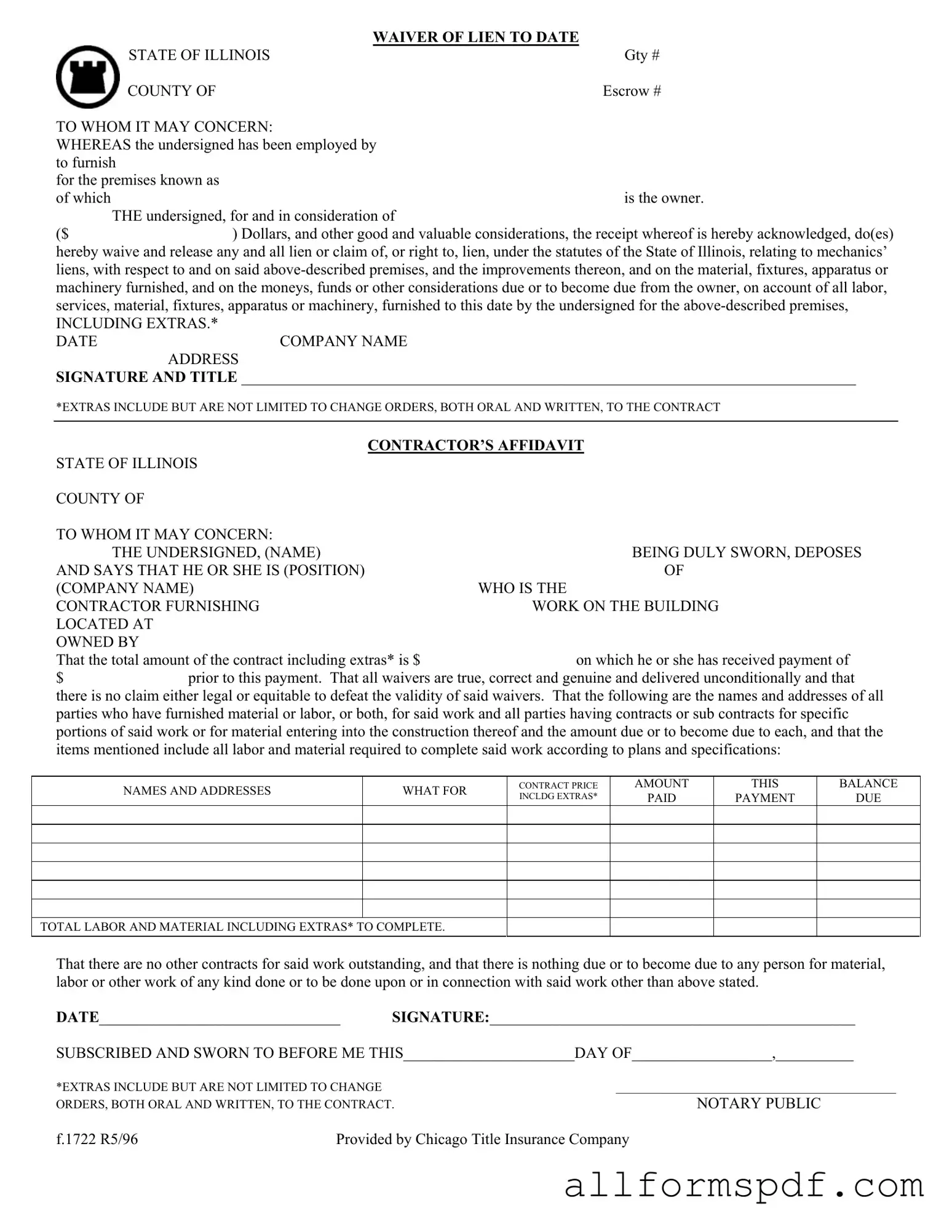When filling out the Chicago Title Waiver Format form, individuals often make several common mistakes that can lead to delays or complications. One frequent error is failing to provide the correct company name. It is essential to ensure that the name matches the legal entity involved in the transaction. An incorrect name can invalidate the waiver and create issues down the line.
Another mistake involves omitting the date of the waiver. The date is crucial for establishing the timeline of the transaction. Without it, the waiver may be considered incomplete, which can lead to disputes regarding the validity of the lien waiver.
People also frequently overlook the importance of specifying the amount being waived. This figure should reflect the total consideration received. If this amount is missing or incorrect, it could result in misunderstandings regarding the scope of the waiver and the obligations of the parties involved.
Inaccurate or incomplete information about the property can also pose significant problems. It is vital to clearly identify the premises being referenced in the waiver. Failing to do so can lead to confusion and potential legal challenges regarding the lien rights.
Another common error is neglecting to include the signature and title of the person completing the form. Without a proper signature, the waiver may not be legally binding. It is important to ensure that the individual signing has the authority to do so on behalf of the company.
Additionally, some individuals forget to include a detailed list of all parties involved in the transaction. This includes anyone who has provided labor or materials. Omitting this information can lead to claims from parties who believe they are entitled to payment but are not listed in the waiver.
Another mistake is not providing the notary public's information correctly. The notarization process is essential for validating the document. If the notary's details are incorrect or missing, the waiver may not hold up in legal situations.
Lastly, individuals often misunderstand the term extras. It is important to clarify what constitutes extras in the context of the waiver. Change orders, both oral and written, should be explicitly mentioned to avoid any confusion about what is included in the waiver.
